Nearly 1,000 People Were Fatally Shot by Police in the U.S. in 2015
A Washington Post study reveals that approximately 40 percent of all unarmed men shot to death by police this year were black. Black males make up just 6 percent of the U.S. population.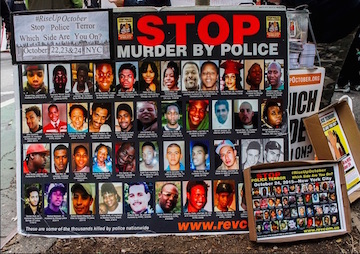
The Washington Post this week published the results of a yearlong study revealing that 965 people were fatally shot by police in the U.S. in 2015.
The report shows that some 40 percent of the unarmed men shot to death by police this year were black, despite the fact that black males make up just 6 percent of the population. Three in five men — a disproportionately high number — who were killed without exhibiting threatening behavior were black or Hispanic.
The project, which chronicled shootings nationwide in real time, using news reports and other public sources, also revealed that police nationwide were killing more than twice as many people as the FBI had previously reported.
Here are the key takeaways from the Washington Post report:
Mental illness played a role in one quarter of incidents.
Many of the deaths of people in the throes of a mental or emotional crisis may be preventable, police and mental-health experts said.
They point to a need for better police training. The Post analysis revealed that more than half of these killings involved police agencies that had not provided officers with state-of-the-art training to de-escalate such encounters.
“This a national crisis,” said Chuck Wexler, executive director of the Police Executive Research Forum, a Washington-based think tank. “We have to get American police to rethink how they handle encounters with the mentally ill.”
One quarter of fatal shootings involved a fleeing suspect.
Police chiefs and training experts said more-restrictive rules on when to give chase could reduce these deaths.
For example, many departments discourage officers from pursuing a suspect alone on foot, particularly in dark or dimly lit areas, unless the person presents an immediate threat. Avoiding unnecessary pursuits might also avoid injecting adrenaline and anger into the encounter, police experts said.
Police “are used to giving commands and people obeying,” said Philip M. Stinson, a professor at Bowling Green State University. “They don’t like it when people don’t listen to them, and things can quickly become violent when people don’t follow their orders.”
Indictments of police officers tripled in 2015, compared with previous years.
Although charges are rarely filed in fatal police shootings, indictments of police officers tripled in 2015, compared with previous years.
Over the past decade, authorities have indicted an average of five officers a year for fatal shootings, a Post analysis found. In 2015, 18 officers were charged, compared to 47 officers between 2005 and 2014.
Half of the 2015 indictments stemmed from shootings that occurred during the year, while the rest date back as far as 2011. In 10 of the 2015 cases, prosecutors had a video record of the shooting, a big increase over previous years.
“Thank God for technology,” said the Rev. Ira Acree, pastor at Greater St. John Bible Church in Chicago, where an officer was charged with first-degree murder in November. “Maybe it’s finally helping us crack the blue code of silence.”
Six percent of the killings were captured by body cameras.
Police-worn body cameras have been championed by police chiefs and politicians as critical to improving transparency. The Post found that 6 percent of the killings were captured by body cameras.
The Post also found that police and local officials often refuse to publicly release video. In more than half of cases with body-cam video, police departments declined Post requests for copies of the footage.
In Burlington, Iowa, Mayor Shane McCampbell has urged police to release body-cam video of a January shooting that accidentally killed a local mother of two. If the videos “are going to be a secret, no one is being held accountable,” McCampbell said. “And that was the point.”
In three-quarters of the fatal shootings, police were under attack or defending someone who was.
The officers were often lauded as heroes.
The Post found that 28 percent of those who died were shooting at officers or someone else. Sixteen percent were attacking with other weapons or physical force, and 31 percent were pointing a gun.
“You have to make life-or-death decisions,” said Mary Jane Norman, who credits Indianapolis police with saving her life in February when they shot and killed her mentally ill son, Kent, as he held a butcher knife to her throat. “A moment’s pause could cause the death of an innocent victim or themselves.”
One in ten people shot and killed by police were unarmed.
Fatal shootings of unarmed civilians sparked much of the national debate over police use of deadly force.
The Post found that 9 percent of shootings involved an unarmed victim. The unarmed victims were disproportionately black. In a Post analysis looking at population-adjusted rates, unarmed black men were six times as likely as unarmed whites to die from police gunfire.
Overall, more than half of those killed in 2015 had guns, 16 percent had knives and 5 percent attempted to hit officers with their vehicles. Three percent had toy weapons, typically replica guns that are indistinguishable from the real thing.
Read more here.
–Posted by Roisin Davis
Your support matters…Independent journalism is under threat and overshadowed by heavily funded mainstream media.
You can help level the playing field. Become a member.
Your tax-deductible contribution keeps us digging beneath the headlines to give you thought-provoking, investigative reporting and analysis that unearths what's really happening- without compromise.
Give today to support our courageous, independent journalists.
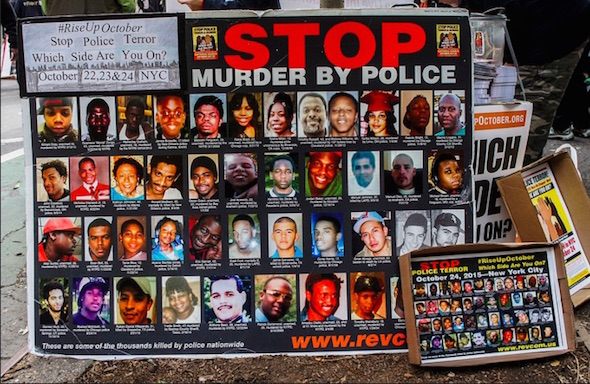

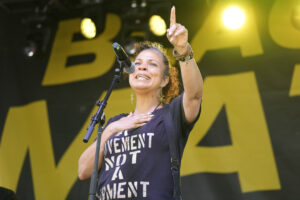
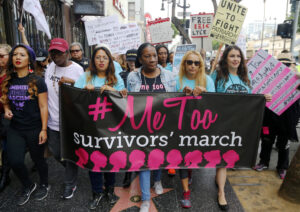
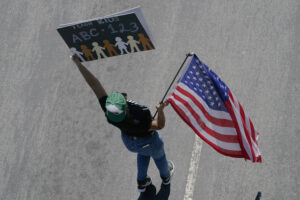
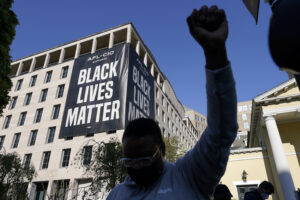
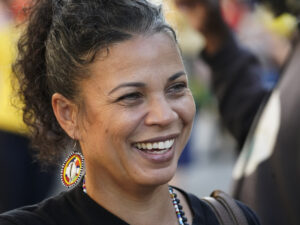


You need to be a supporter to comment.
There are currently no responses to this article.
Be the first to respond.